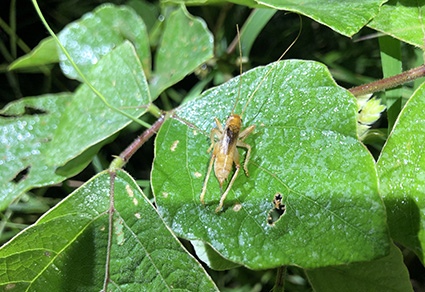Abstract
Based on the specimens from Guangxi and Yunnan deposited in the Guangxi Normal University, the paper is firstly reported the female sex of two known species from China, viz. Furcilarnaca armata (Bey-Bienko, 1957) and Furcilarnaca forceps (Bey-Bienko, 1962). The female of Furcilarnaca armata (Bey-Bienko, 1957) is very similar to Furcilarnaca chiangdao in seventh abdominal tergite and subgenital plate, and they may belong to the same species. After examining the female subgenital plate of Furcilarnaca chirurga (Bey-Bienko, 1962), we treat Furcilarnaca hirta as a valid species. Mitochondrial genomes of six specimens of three Furcilarnaca species were sequenced and annotated in this study. The organization and gene content of new sequenced mitogenomes were conserved, except for significant variation of the control region. All the PCGs started with the typical ATN codons and most ended with complete TAA or TAG codons. Combined with five mitogenomes in NCBI, a total of twelve specimens (including one outgroup) were used in phylogenetic analysis based on 13 PCGs. The result revealed that Furcilarnaca was a monophyletic group. These data will provide more meaningful genetic information and validate the phylogenetic relationships within the Gryllacrididae.
References
Bian, X., Shi, F.M. & Guo, L. (2013) Review of the genus Furcilarnaca Gorochov, 2004 (Orthoptera: Gryllacrididae, Gryllacridinae) from China. Far Eastern Entomologist, 268, 1–8.
Bian, X., Liu, J. & Yang, Z.Z. (2021) Annotated Checklist of Chinese Ensifera: The Gryllacrididae. Zootaxa, 4969 (2), 201–254. https://doi.org/10.11646/zootaxa.4969.2.1
Bernt, M., Donath, A., Jühling, F., Externbrink, F., Florentz, C., Fritzsch, G., Pütz, J., Middendorf, M. & Stadler, P.F. (2013) MITOS: improved de novo metazoan mitochondrial genome annotation. Molecular Phylogenetics and Evolution, 69 (2), 313–319.
Cigliano, M.M., H. Braun, D.C. Eades & D. Otte. (2021) Orthoptera Species File. Version 5.0/5.0. Available from: http://Orthoptera.SpeciesFile.org (accessed 8 November 2021)
Dierckxsens, N., Mardulyn, P. & Smits, G. (2017) NOVOPlasty: de novo assembly of organelle genomes from whole genome data. Nucleic Acids Research, 45 (4), e18. https://doi.org/10.1093/nar/gkw955
Gorochov, A.V. (2004) Contribution to the Knowledge of the Fauna and Systematics of the Stenopelmatoidea (Orthoptera) of Indochina and Some Other Territories. V. Entomologicheskoe Obozrenie, 83 (4), 816–841. [in Russian; English translation: A Contribution to the Fauna and Systematics of Stenopelmatoidea (Orthoptera) of Indochina and Some Other Territories: V. Entomological Review, 84 (8), 900–921] https://doi.org/10.1016/j.ympev.2012.08.023
Ingrisch, S. (2018) New taxa and records of Gryllacrididae (Orthoptera, Stenopelmatoidea) from South East Asia and New Guinea with a key to the genera. Zootaxa, 4510 (1), 1–278. https://doi.org/10.11646/zootaxa.4510.1.1
Katoh, K. & Standley, D.M. (2013) MAFFT multiple sequence alignment software version 7: improvements in performance and usability. Molecular Biology and Evolution, 30, 772–780. https://doi.org/10.1093/molbev/mst010
Kumar, S., Stecher, G. & Tamura, K. (2016) MEGA7: Molecular Evolutionary Genetics Analysis version 7.0 for Bigger Datasets. Molecular Biology and Evolution, 33 (3), 1870–1874. https://doi.org/10.1093/molbev/msw054
Li, M.M., Sun, M. L., Liu, X.W. & Li, K. (2015) A taxonomic study on the species of the genus Furcilarnaca (Orthoptera, Gryllacrididae, Gryllacridinae). Zootaxa, 4039 (3), 418–430. https://doi.org/10.11646/zootaxa.4039.3.2
Ronquist, F., Teslenko, M., van der Mark, P., Ayres, D.L., Darling, A., Höhna, S., Larget, B., Liu, L., Suchard, M.A. & Huelsenbeck, J.P. (2012) MrBayes 3.2: efficient Bayesian phylogenetic inference and model choice across a large model space. Systematic Biology, 61 (3), 539–542. https://doi.org/10.1093/sysbio/sys029
Zhou, Z.J., Zhao, L., Liu, N., Guo, H., Guan, B., Di, J.X. & Shi, F.M. (2017) Towards a higher-level Ensifera phylogeny inferred from mitogenome sequences. Molecular Phylogenetics and Evolution, 108, 22–33. https://doi.org/10.1016/j.ympev.2017.01.014


